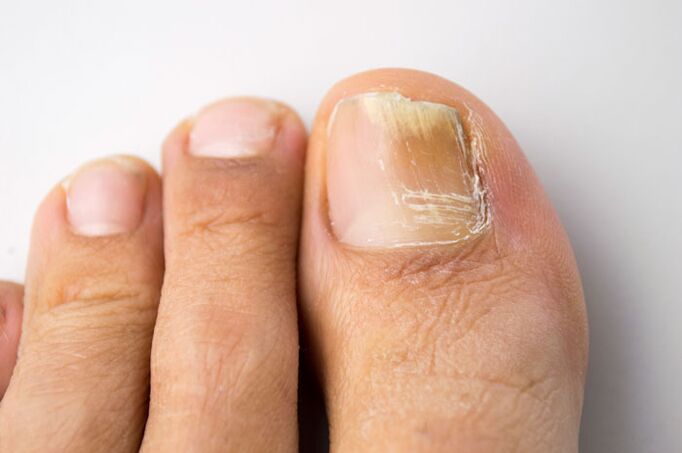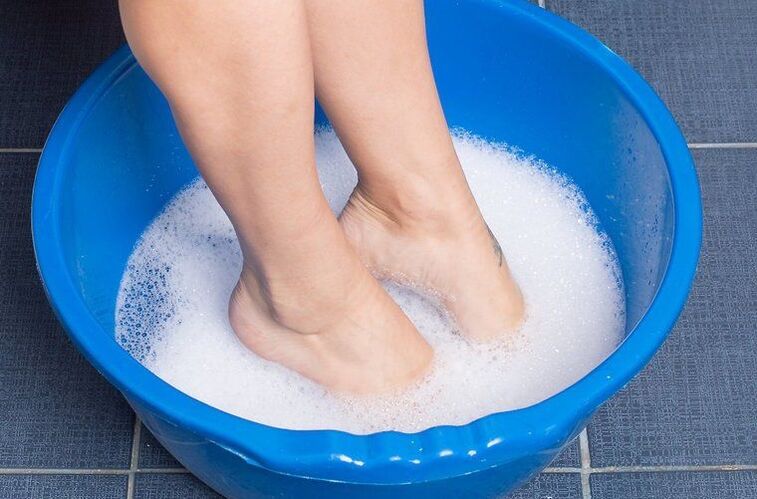With a fungal infection of the nail plates or onychomycosis, you should contact a dermatologist or mycologist. The first doctor specializes in skin problems. In its competence are allergic, bacterial, viral and fungal lesions of the epidermis. A mycologist is a narrowly qualified specialist. He understands all types of fungi, treats mycotic lesions of any localization, conducts research and collects statistical information.
If you need medical help
A person becomes infected with a fungus when its spores get on the skin or nail plates. You can "catch" pathogenic microorganisms in public places (sauna, swimming pool, beauty salon), from members of your own family, in a shoe store. Fungi are very fond of humid and warm environments. They can reproduce in shoes. Most often this happens when a personsuffers from sweaty feet, ignores this fact or neglects the rules of personal hygiene.

When in contact with fungi, a person does not always become infected. This is preceded by a decrease in immunity. Normally, the body successfully copes with the onslaught of billions of microbes every day. When the defenses are exhausted, you can expect trouble.
Onychomycosis is a serious infectious disease. With it, a person is in contact with pathogenic fungi for a long time. Mycotoxins with toxic properties enter his body. It also negatively affects the immune system. Eliminate nail fungus as soon as possible. The longer a person coexists with an infection, the more difficult and longer the treatment. Once started, onychomycosis is difficult to cure, becomes chronic, recurs, and requires lifelong use of prophylactic drugs.
It is necessary to contact a doctor when the first signs of nail mycosis appear, namely:
- if covered with small spots, dots, stripes, pale inclusions;
- if the color of the nail plate has changed - it has become yellow, brown, grayish or greenish;
- As the plate grows in, improper nail trimming creates a "gateway" for infection.
- if the nails peel off - a sign of the progress of onychomycosis;
- if a person suffers from tinea - the fungus easily spreads from the skin to the nails;
- if there are people with onychomycosis among family members;
- When the nails have lost their shine, they become dull and heterogeneous.

Direct reasons for visiting a doctor are itching, sweating, dry skin on the feet. Excessive sweating and unpleasant foot odor can indicate a developing fungus.
Who should go first
After you have decided to see a doctor, the first thing you should do is make an appointment with a dermatologist. There are skin specialists in all paid and free hospitals. You can make an appointment with a dermatologist free of charge at the skin care center at your place of residence.
The dermatologist conducts a visual examination - detects signs of fungal development and examines the skin for other symptoms of mycotic lesions on the body. Usually, the doctor prescribes tests (scraping nails or skin) that will confirm or refute fungal disease.
If the specialist's suspicions are confirmed, additional tests may be prescribed - a general and biochemical examination of blood, urine and liver tests. Additional information is required to identify the cause of the infection and detect any possible comorbidities. Blood and liver disorders impose restrictions on the use of certain drugs.
In advanced cases, a referral for a consultation with a mycologist is issued - if all toenails are damaged by onychomycosis, the process of onycholysis (destruction of the plates) has begun, some nails are already missing, the patient himself was previously unsuccessful medication. A narrow profile specialist will prescribe additional tests to identify the type of pathogen. Certain medications are more effective for a specific type of fungus.
General principles for eliminating onychomycosis
To treat nail fungus, specialists prescribe several drugs at once. Among them:
- systemic antifungals;
- locally acting dosage forms;
- vitamin preparations;
- immunostimulants.
The doctor individually assesses the patient's lifestyle and hygiene culture. If necessary, he gives appropriate recommendations for shortening the duration of therapy.
Medical treatment should be carried out very conscientiously. The patient must take the drugs orally in a timely manner and strictly adhere to the treatment conditions recommended by the doctor. Local funds are used until the problem is completely eliminated. As a rule, use is continued for 1-2 months after the symptoms of onychomycosis have disappeared. As topical preparations are prescribed:
- lacquers;
- gels;
- Anoint;
- Solutions.

As auxiliary methods, water-salt baths are recommended, removal of plaques with the help of special softening ointments, surgical assistance is occasionally required.
Immunostimulants and vitamins are selected according to the results of biochemical analyzes. In some cases, nail fungus is the first sign of serious diseases of the internal organs or the hematopoietic system.
Don't throw away the doctor's phone number right after the first consultation. The success of onychomycosis therapy depends on controlling the healing process. Doctor consultations and tests are repeated several times during the course of therapy (up to 1 year). They must be taken again immediately after the changed nail plate has regrown, a month after full recovery. In order not to complicate the treatment process, the patient should refuse decorative varnish and nail extensions.



























